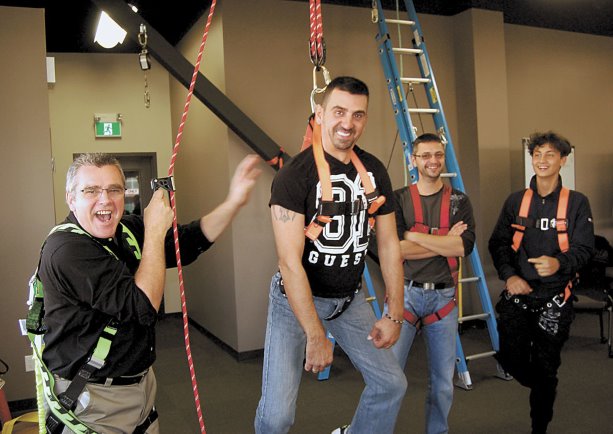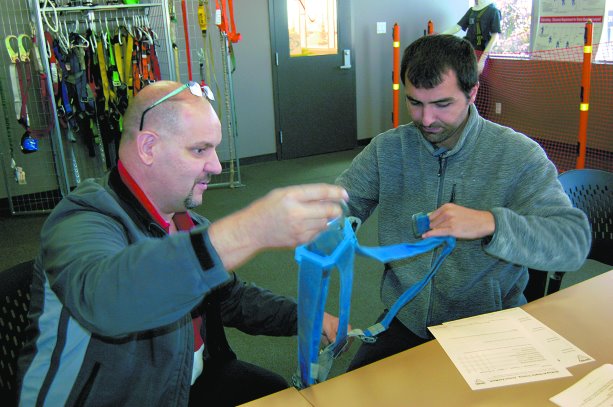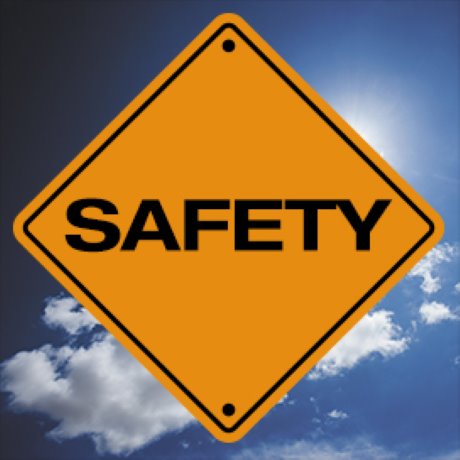Judging by the overwhelming response and participation at a privately operated training facility in Bolton, Ont. contractors are keenly aware of Ontario’s new working at heights training legislation.
"There is a huge awareness of the legislation ranging from large firms to small roofing contractors," says Kathy Dukoff, chief operating officer for Safe-Tech Training Inc.
As of April 2015, employers had to ensure workers completed a working at heights training program approved by Ontario’s chief prevention officer and delivered by an approved training provider before they can work at heights.
Safe-Tech is the working at heights training partner of Workplace Safety and Prevention Services and the Ontario working at heights training partner of Honeywell Fall Protection.
Contractors with previous fall training must comply with the new standards by April 2017, says Dukoff, pointing out the legislation also applies to "construction-related activities" such as those which may be carried out by maintenance staff in industrial plants.
"We were one of the first providers approved by the Ministry of Labour (MOL) to deliver the training," says Dukoff, who founded the company in 1989 with her husband Dan.
Although the overwhelming majority of its safety training is conducted at employer locations, the legislation and the anticipated demand for working at heights education was a major reason they opened a brand new 558-square-metre facility in Bolton in June 2015.
Comprised of a 250-square-metre training room with extensive array of fall protection equipment and an administration wing, it was officially opened this past June by Town of Caledon officials.
Safe-Tech has 14 instructors, out of a total workforce of 22, who work six days a week and often conduct training at nights and on weekends for industrial and construction companies who operate on seven-day-a-week, 24-hour-a-day operation, says Dukoff.
One of those instructors is Chuck Greenhow, who delivered a sobering message on workplace hazards — especially fall-related ones — at a recent training session at the Bolton facility.
"Every day, countless workers are injured in falls," he told the trainees, who came from as far as Whitby in the east and Kitchener to the west.
Greenhow, pointed out that 60 per cent of falls actually occur on the same level workers are on. Those falls can result in human suffering and anxiety that extends long after the incident. An average WSIB (Workplace Safety and Insurance Board) claim is $11,771. However, when other factors such as staff replacement, lost productivity and equipment, are factored in, the WSIB estimates the cost to a company at approximately $59,000 per jury, he pointed out.
"Are you ready to make the call to the family of a fallen worker?" said Greenhow, citing the emotional burden on fellow workers, especially those who may have witnessed the fall.
The intensive eight-hour seminar, comprised of both classroom and practical exercises, included videos, tests, an in-depth focus of fall arrest and fall protection systems, a review of workers’ right to refuse unsafe work, equipment demonstrations, and a major examination at the end of the day.
At the beginning of the day, the participants were told they would have to achieve a 75 per cent grade to pass and be issued a temporary Safe-Tech working at heights certificate which is valid until permanent ones are issued by the MOL.
A failing mark would require them to repeat the entire program, said Greenhow, pointing out workers have to show their certificates if MOL inspectors come onto a job site.
As part of the practical component of the session, the group was told to find the defects in disused harnesses such as signs of previous deployment, frayed webbing or stitching, and even names printed in ink, which can weaken the fabric, he pointed out.
"A mountain climbing harness is not acceptable," said Greenhow, stressing that working at heights equipment has to be CSA-certified.
After a demonstration on the proper method of donning and positioning a full body harness and then connecting it to a lanyard and safety line, the workers were required to put on the equipment to ensure they had been following his instructions.
Greenbow stressed the need to carefully adhere to workplace safety practices and the proper use of fall arrest system to prevent falls in the first place.
"Heaven forbid that any of you should fall because, if you do, it means you were doing something wrong," he added.
In the end, workplace safety all boils down to using common sense and carefully assessing risks. "If you think something is unsafe, it probably is."

1/2
Safe-Tech Training Inc. instructor Chuck Greenhow, with the assistance of trainee Ninoslav Milovic, simulates the condition of being in a suspended safety harness. Although designed to prevent injury or death, a deployed harness can result in suspension trauma.
Photo: DAN O'REILLY
2/2
As part of their working at heights training



Recent Comments
comments for this post are closed